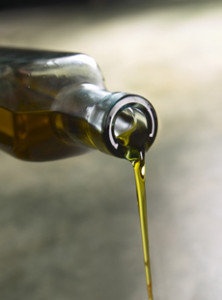TIP OF THE DAY: Cacio E Pepe Spaghetti & The Recipe
|
In addition to National Pasta Day on October 17th, there’s a National Spaghetti Day and it’s today, January 4th. Today’s tip is to celebrate a preparation that is rarely found on restaurant menus: Cacio e Pepe.
Cacio e Pepe, “Cheese and Pepper,” is a Roman dish from central Italy. Cacio is a dialect word for a sheep’s milk cheese (like Pecorino Romano), and pepe refers to black pepper. The recipe is that simple: long, thin spaghetti*, grated Pecorino Romano cheese, and freshly-ground pepper. The only other ingredient in the dish is a bit of olive oil to bind the ingredients. It whips up very quickly when you don’t have time or energy to make a more elaborate recipe. > The history of Cacio e Pepe. > The scoop on pecorino cheese is below. If you don’t have the ingredients in the classic recipe—or prefer others—here’s what we would substitute: In this recipe from Good Eggs, the Pecorino Romano cheese is blended with some Parmigiano-Reggiano for more depth of flavor. Since so much of the flavor is from the cheeses, buy good ones! Ingredients |
|
|
|
__________ *Long, thin spaghetti has different names in different regions of Italy; for example, capellini, fedelini, spaghetti alla chitarra and tonnarelli. In the U.S., you’re most likely to find spaghettini, vermicelli and of course, spaghetti. The widths of all of these strands vary, but not in a significant way to impact the recipe. 1. FILL a large pot with water about 3/4 full. Add 1/4 cup of salt and taste the brine. The rule of thumb is that the cooking water should be as salty as ocean water. Add up to an additional 1/4 cup salt as desired—but don’t over-salt, since the cheese is very salty. Cover the pot and bring it to a rolling boil over high heat. Meanwhile… 2. GRATE the cheese into the bottom of a large bowl. This will be the bowl in which you’ll toss and serve the pasta, so choose accordingly. When the cheese is grated, add about 10 grinds of fresh black pepper to the bottom of the bowl and set aside. 3. REDUCE the heat and add the pasta to the boiling water. Fresh pasta will take about 3-5 minutes to cook, while dried spaghetti will 10-12 minutes, per package directions. When the pasta is at the right state of al dente, dip a mug into the pot to reserve a bit of the pasta cooking water; then strain the pasta in a colander. (Why do cooks reserve some of the pasta cooking water for blending? The heat melts the cheese, while the starches in the water help to bind the cheese and pepper to the pasta.) 4. ADD the strained pasta to the bowl, along with a splash of the pasta water and a drizzle of olive oil. Use a large fork or soft tongs to toss the pasta, pepper and cheese. (We love our silicone pasta tongs). When the spaghetti is well coated, taste it and adjust the cheese and pepper levels as desired. If the texture is a little dry, add another splash of pasta water or a bit more olive oil. Serve immediately. |
||
 Cacio e Pepe has no formal sauce; just a bit of olive oil that binds the grated cheese into a coating. Photo courtesy North American Olive Oil Association. |
ABOUT PECORINO ROMANO CHEESE
Pecorino Romano is a hard, salty, full-flavored Italian cheese made from sheep’s milk (pecora is the Italian word for sheep). An ancient cheese, Pecorino Romano was a dietary staple for the Roman legionaries. Today’s Pecorino Romano is made from the same recipe, albeit with pasteurized milk. The method of production of the cheese was first described by Latin writers like Pliny the Elder, some 2,000 years ago. It was made in Roman countryside until 1884, when a city council ruling over cheese salting in shops caused producers to move to the island of Sardinia. One brand, Fulvi, is still made in the countryside outside of Rome. It is known as genuine Pecorino Romano. Like Parmigiano-Reggiano, Pecorino Romano is made in very large wheels, typically 65 pounds in weight. Today, the designation “Pecorino Romano” is protected under the laws of the European Union. [Source] Pecorino Romano is often used in highly flavored pasta sauces, particularly those of Roman origin such as Bucatini all’Amatriciana and Spaghetti Alla Carbonara. |
|
|
Like Asiago, Parmesan and other grating cheeses, Pecorino Romano is often served on a cheese plate, accompanied by some hearty red wine. Typically, a younger cheese (five months of maturation) is used for table cheese, and a more mature, sharper cheese (eight months or longer) for grating and cooking. Don’t Confuse These Cheeses There are two other well-known pecorino cheeses, which are less salty and eaten as table cheese or in sandwiches. Don’t confuse them with Pecorino Romano: |
||

